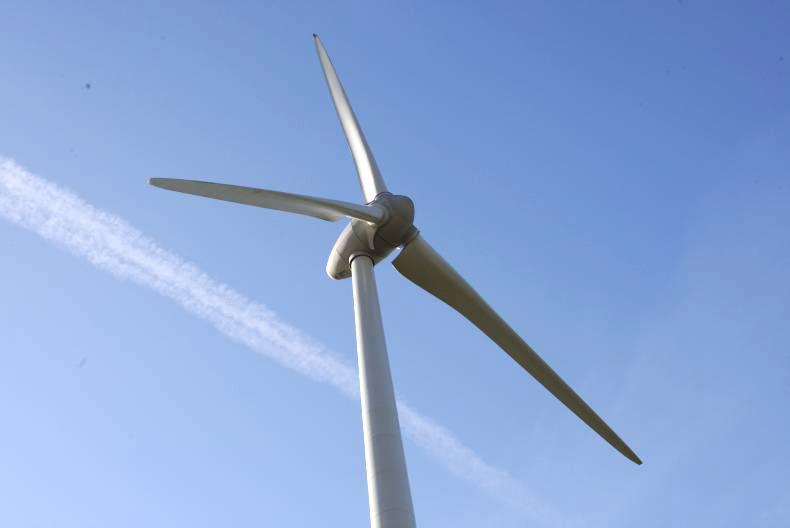The plans, reported in national media on Tuesday, encourage communities to invest in wind farms in a move aimed at increasing support for the controversial projects. Confirming the accuracy of the media reports today to the Irish Farmers Journal, the Department of Communications, Energy and Natural Resources said Minister White believes there is “scope for more community involvement, including stakeholding, in renewable energy infrastructure”. The full proposal will be published in the White Paper later this year.
The chair of Protect Rural Ireland and Windaware Ireland, Henry Fingleton, says this latest plan is a tactic to steer away from the main issue.
“The fact is that people in rural communities don’t want wind farms,” he said. “This proposal by the Minister is a Dublin 4 solution to a rural problem.”
Fingleton referenced a 2013 study carried out by the London School of Economics which found that larger wind farms of 20 or more turbines reduce property values by up to 12% within 2km and by 3% at an 8km to 14km distance. He said: “Why would people invest in something that is going to devalue their farm or property?”
The plan being introduced by the Minister will allow rural communities to form co-operatives to erect turbines, something Fingleton says will turn local people against each other.
“It is a financial incentive, absolutely,” he said. “But the only thing it will succeed in doing will be to create division between people. Turbines intrude on the landscape, damage local wildlife, and impact on livestock. Some farmers will benefit from the rental income of having a wind turbine on their farm but the majority that I know are against them.”
He added that it is doubtful whether much carbon dioxide is being saved by wind farms. “We have nothing against renewable energy itself. The Minister would do better to look at converting Moneypoint [Ireland’s largest coal-generated electricity plant] into a biomass plant to save on energy costs.”
Fingleton, a part-time farmer from Co Laois, is one of the leading voices in the opposition to the erection of the Cullenagh wind farm in the county. In May, the Commercial Court dismissed a legal challenge from Fingleton and others to An Bord Pleanála’s decision to grant permission to Coillte Teoranta to build 18 wind turbines in the area. The case is now waiting in the Court of Appeal.
Wind farms in Ireland
According to figures from the Irish Wind Energy Association, there are 195 wind farms in the Republic of Ireland, and 228 on the entire island. Approximately 18.3% of Ireland’s electricity came from wind in 2014, according to the Sustainable Energy Authority of Ireland.
In August this year, Minister White visited a renewable energy co-op on the Aran Islands, saying there is a case to be made for the islands serving as an example of how the country as a whole could benefit from the transition to low-carbon economy. Energy Co-operatives Ireland, who invited the Minister, says there are already five renewable energy co-ops in Ireland and these co-ops are a powerful force that "work together to inform Government policy and industry practices with some considerable success.”
ICOS
The Irish Co-operative Society (ICOS), an umbrella organisation that promotes commercial co-op businesses and enterprises across the Irish economy, responded more positively to the Minister's proposal, saying it “strongly supports the recognition from Minister White that a community co-operative-owned stake in wind projects should be the model of wind generation going forward.”
However, it added that until the detail of how communities are to be supported in developing these projects is published, the organisation will reserve its views as to the likely efficacy of any such proposals.
Siobhán Mehigan, co-operative development executive with ICOS, added that the “organisation is seeing a lot more communities looking to establish co-operatives to both contribute to the creation of a green energy market but also ensuring their communities are financially benefiting from the profits of these ventures.”
Emission reductions
Overall, Ireland must reduce its emissions by 20% between 2005 and 2020 under existing EU commitments.
Announcing the imminent publication of the White Paper, which will set out Ireland's energy policy up until 2030, Minister White said Ireland is "already making significant progress on the transition to a low-carbon economy, with an estimated 22.7% of electricity generated from renewable sources in 2014."
At world level, the UN is preparing for a major climate conference in Paris in December, aimed at reaching international agreement on a global reduction of greenhouse gas emissions.
Read more: What do young farmers think of wind farms?






 This is a subscriber-only article
This is a subscriber-only article











SHARING OPTIONS: